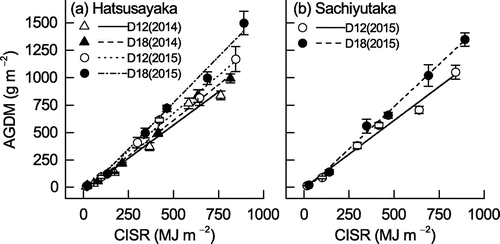Figures & data
Table 1. Dates (month/day and DAS) and CISR values at the R1, R5, and R6 stages for the Hatsusayaka and Sachiyutaka soybean cultivars grown at normal (D12) and dense (D18) densities in 2014 and 2015.
Figure 1. Changes in (a) mean temperature, (b) daily total solar radiation, and (c) precipitation at 10-day intervals (i.e. an average of three times per month) to represent the early (E), middle (M), and late (L) parts of the month during the experimental periods in 2014 and 2015. Averages represent the 13-year mean from 2001 to 2013 at the meteorological station adjacent to the study site. Asterisks (*) indicate values outside of the 95% confidence interval for the 13-year mean (i.e. significantly higher or lower values).
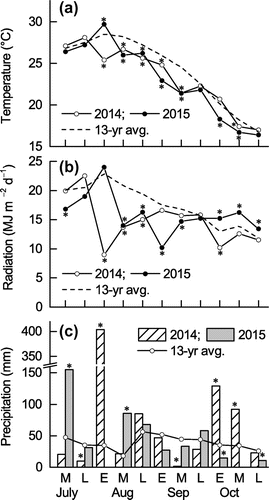
Table 2. Yield, yield components, AGDM, harvest index, and lodging angle at maturity for the soybean cultivars Hatsusayaka and Sachiyutaka grown at normal (D12) and dense (D18) densities in 2014 and 2015.
Figure 2. Changes of (a, b) AGDM and (c, d) LAI for the soybean cultivars (H, Hatsusayaka; S, Sachiyutaka) at normal (D12) and dense (D18) densities in 2014 and 2015. Values are means ± S.E. (n = 6).
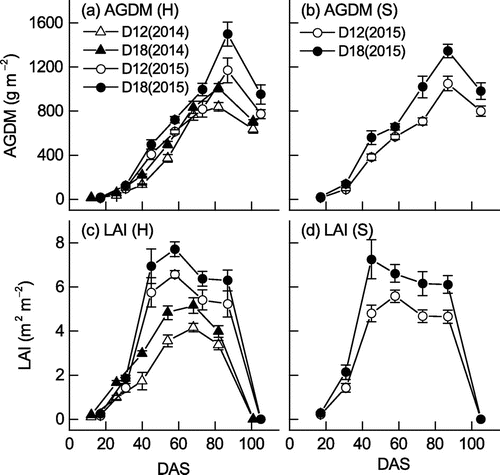
Table 3. Maximum AGDM, maximum LAI, CISR at the last destructive samples (82 DAS in 2014 and 87 DAS in 2015), RUE, and the date (DAS) and CISR values when FIPAR reached 80% and 90%.
Figure 3. Changes in SLA of the soybean cultivars (a) Hatsusayaka and (b) Sachiyutaka grown at normal (D12) and dense (D18) densities in 2014 and 2015. Values are means ± S.E. (n = 6).
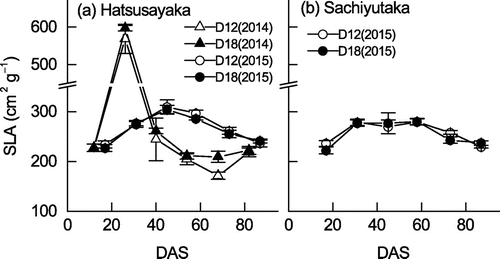
Figure 4. Changes in SPAD values of the soybean cultivars (a) Hatsusayaka and (b) Sachiyutaka grown at normal (D12) and dense (D18) densities in 2014 and 2015. Values are means ± S.E. (n = 6).
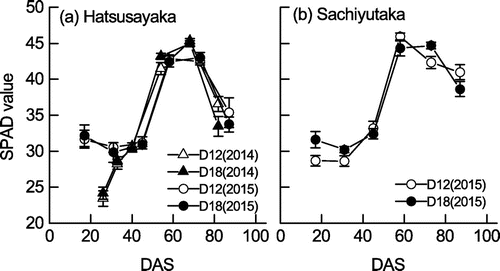
Figure 5. Changes of (a, b) CGR, (c, d) NAR, and (e, f) mLAI of the two soybean cultivars (H, Hatsusayaka; S, Sachiyutaka) at normal (D12) and dense (D18) densities in 2014 and 2015. Values are means ± S.E. (n = 6).
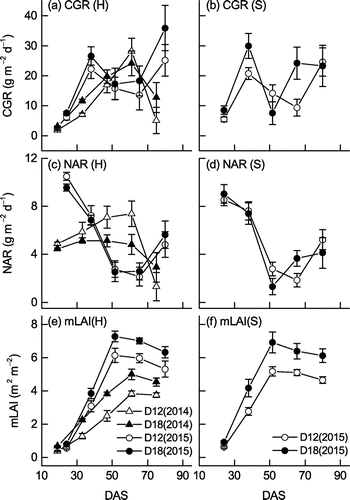
Figure 6. Linear regressions for the relationships between CGR and (a, c) NAR and (b d) mLAI before (a, b) and after (c, d) stage R3 for the two soybean cultivars (H, Hatsusayaka; S, Sachiyutaka) in 2014 and 2015. Linear regression equations are presented only for the following statistically significant relationships. Coefficients of determination (R2) are (a) Hatsusayaka 2015: R2 = .968 (p < .05), (b) Hatsusayaka 2014: R2 = .994 (p < .001), Hatsusayaka 2015: R2 = 1.000 (p < .001), Sachiyutaka 2015: R2 = .998 (p < .001), (c) Hatsusayaka 2014: R2 = .671 (p < .05), Hatsusayaka 2015: R2 = .920 (p < .001), Sachiyutaka 2015: R2 = .889 (p < .001). (d) No significant relationships.
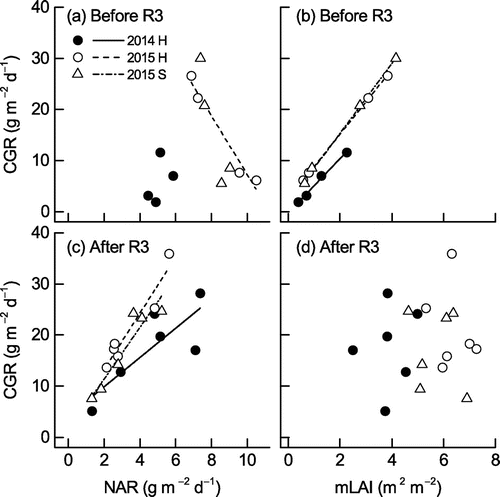
Figure 7. Linear regression relationships between AGDM and CISR for the two soybean cultivars for (a) Hatsusayaka and (b) Sachiyutaka grown at normal (D12) and dense (D18) densities in 2014 and 2015. Values are means ± S.E. (n = 6). Equations and coefficients of determination (R2) are (a) Hatsusayaka: D12 in 2014: y = −34.8 + 1.207x, R2 = .978 (p < .001), D18 in 2014: y = −35.3 + 1.295x, R2 = .995 (p < .001), D12 in 2015: y = −15.4 + 1.381x, R2 = .993 (p < .001), D18 in 2015: y = −66.6 + 1.678x, R2 = .990 (p < .001), (b) Sachiyutaka: D12 in 2015: y = −3.7 + 1.229x, R2 = .986 (p < .001), D18 in 2015: y = −33.5 + 1.541x, R2 = .995 (p < .001).
